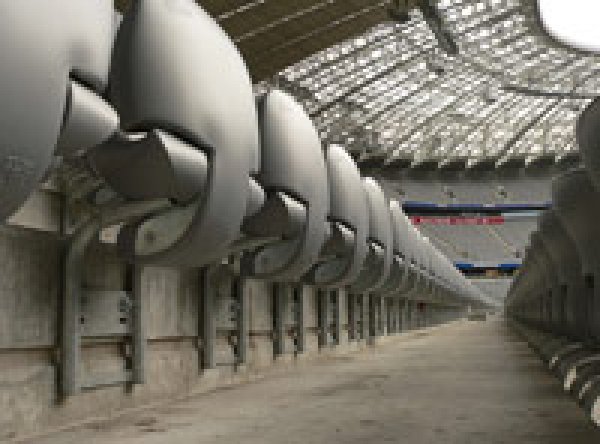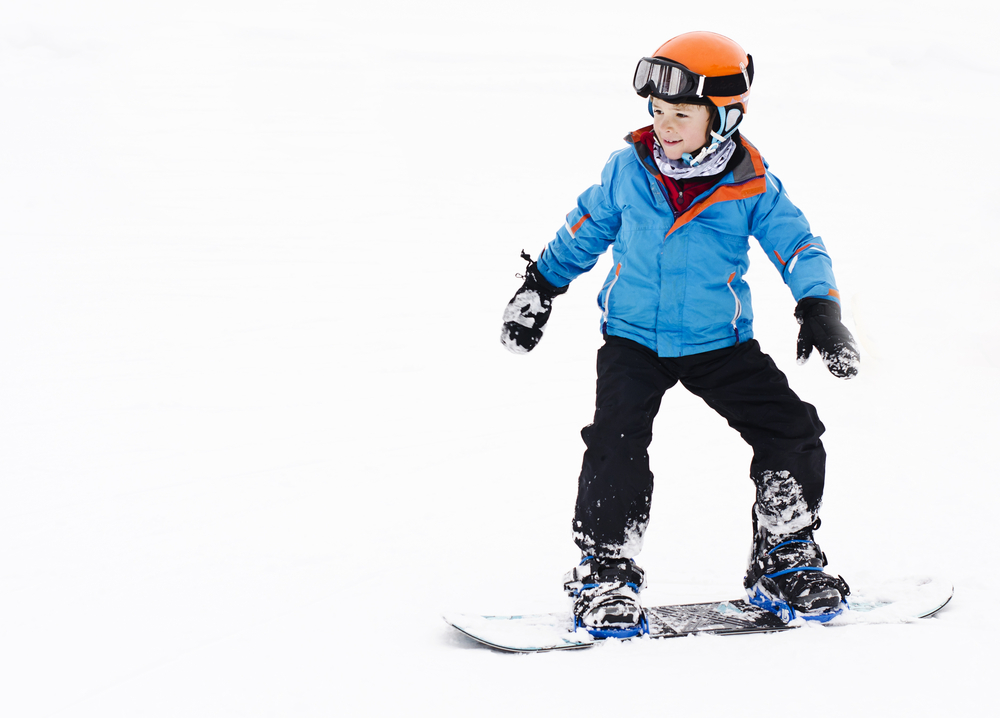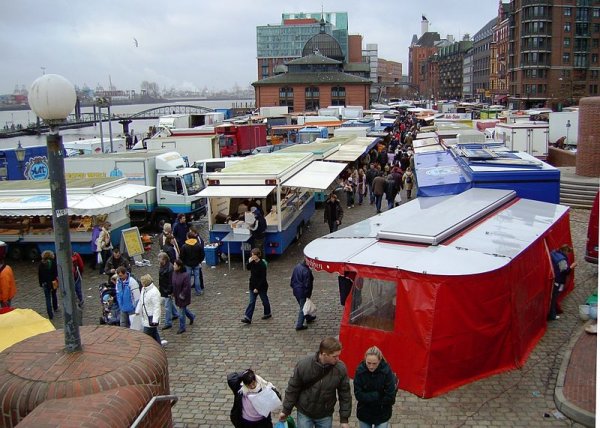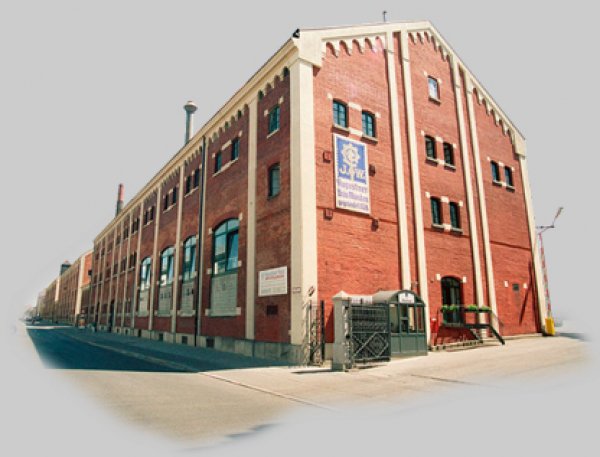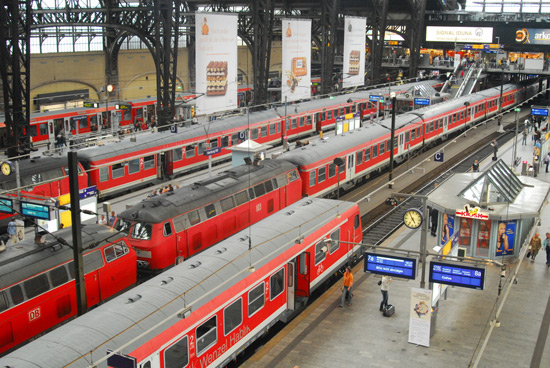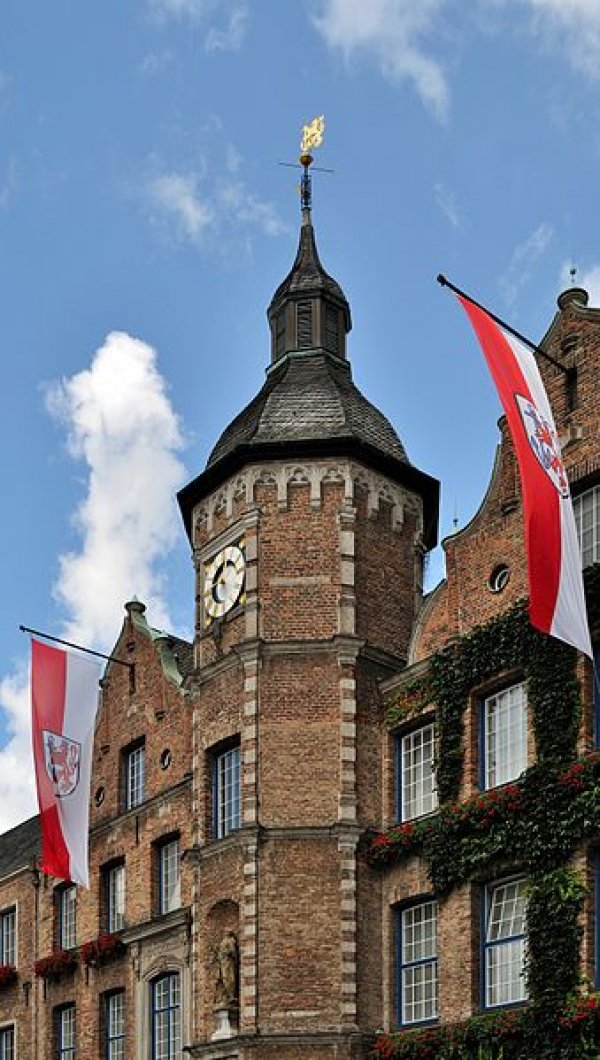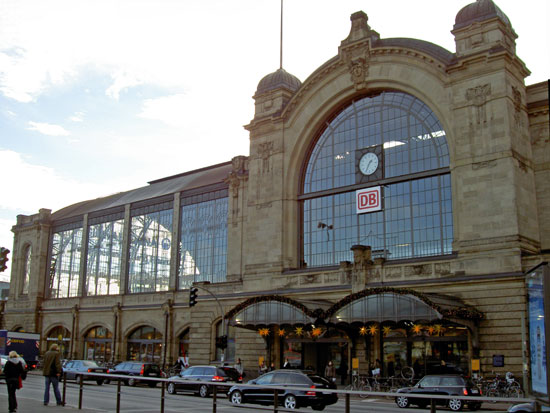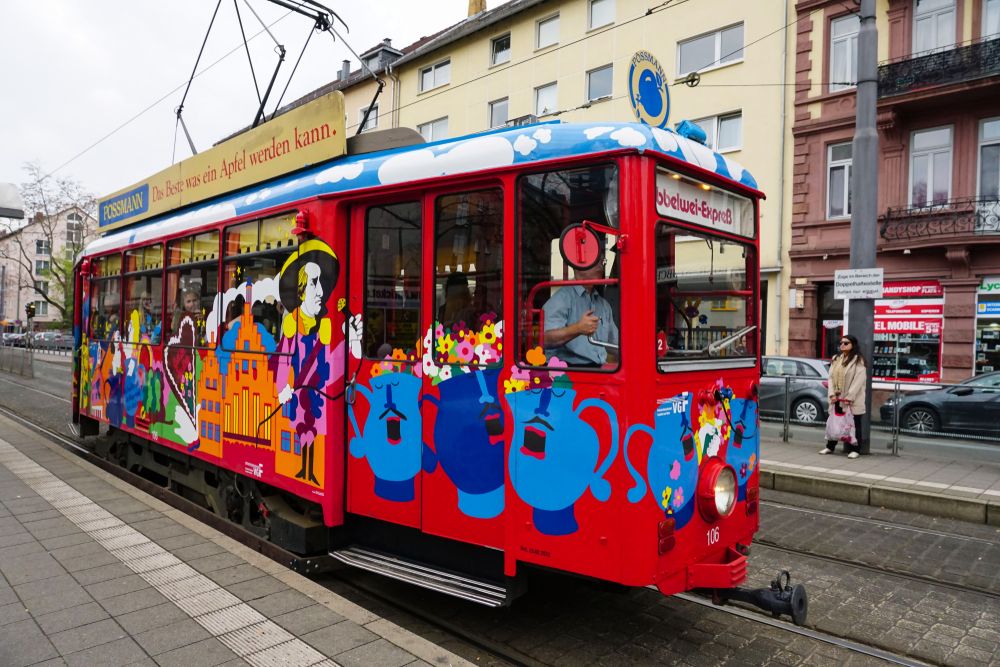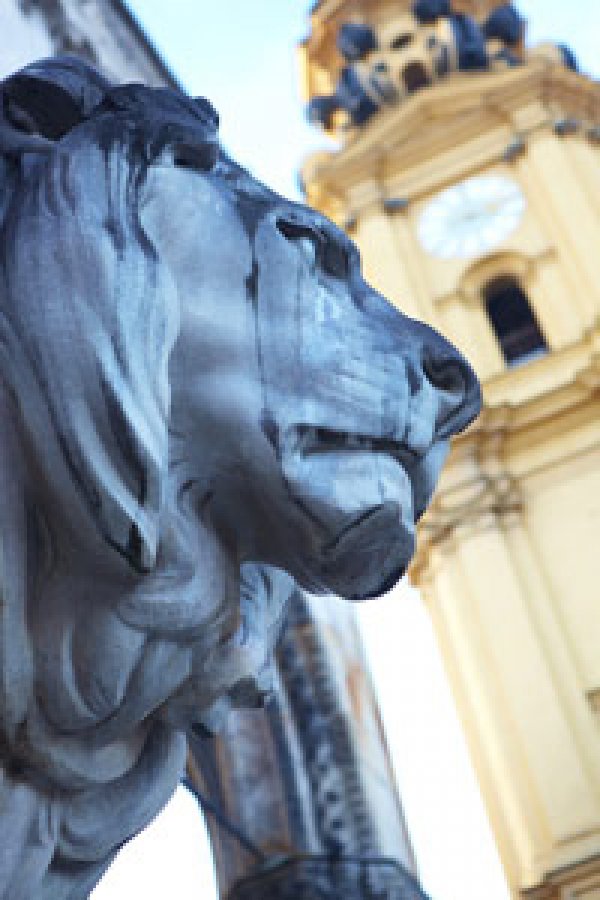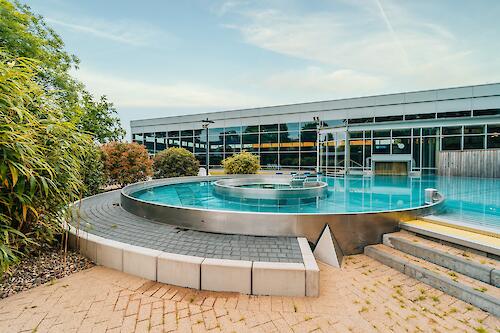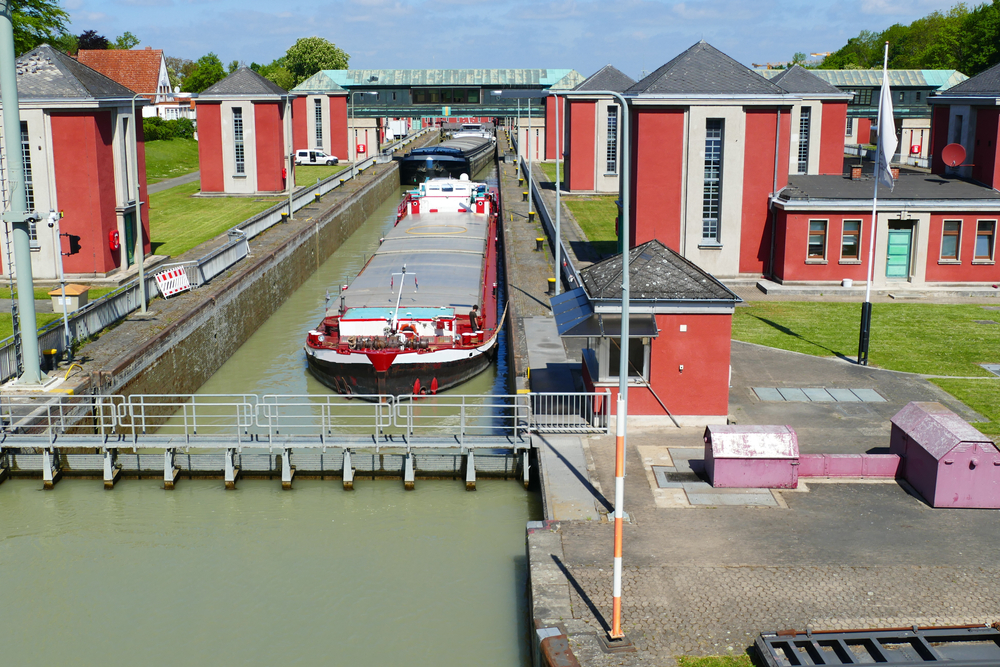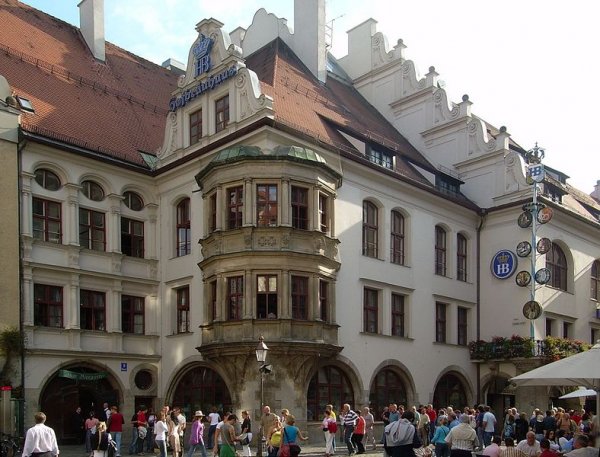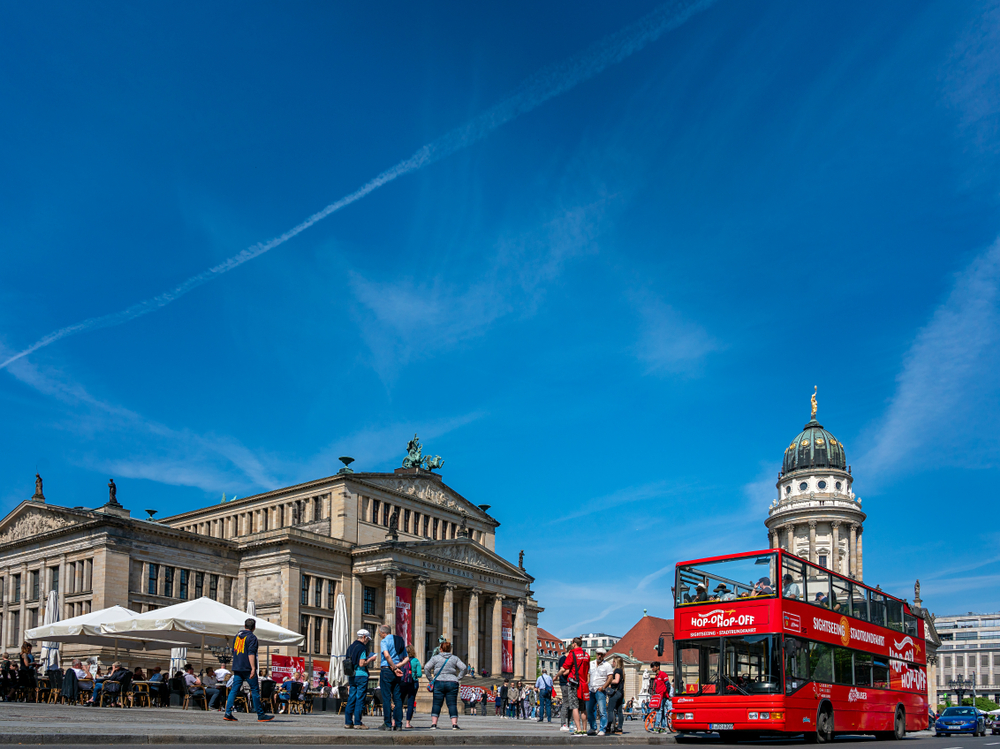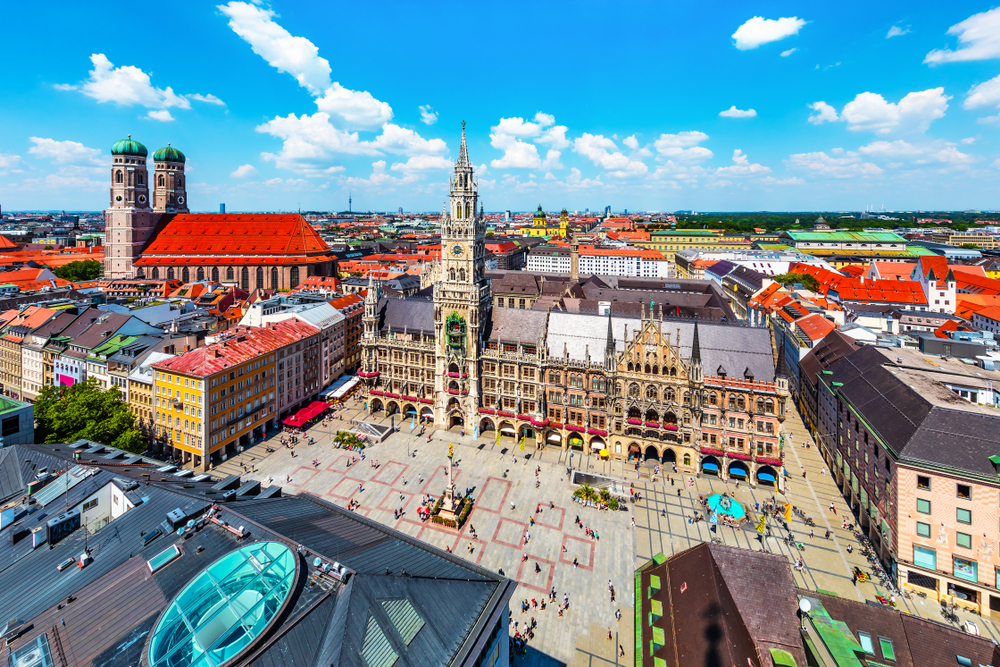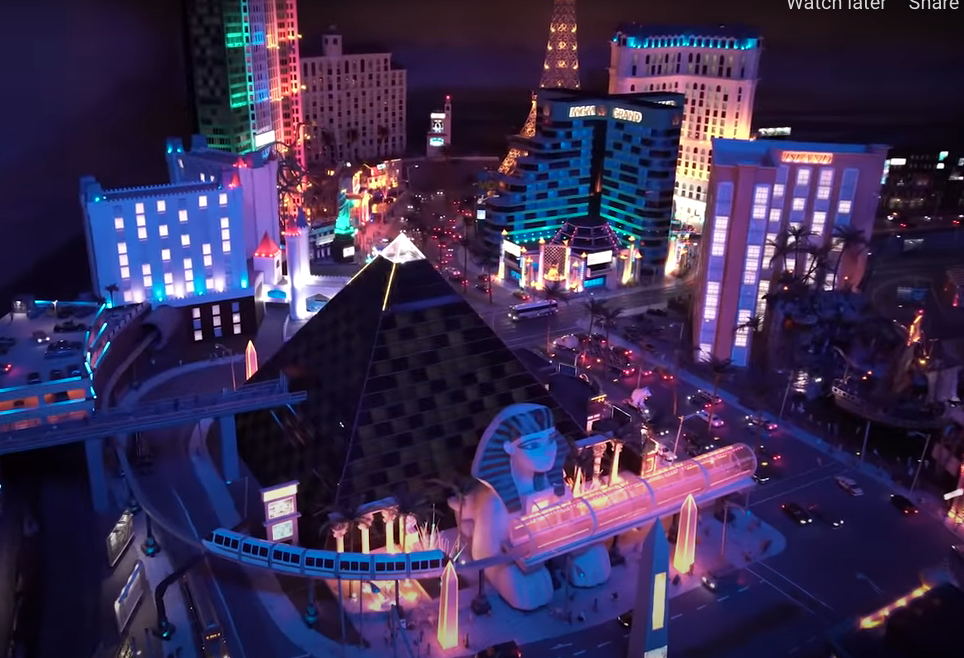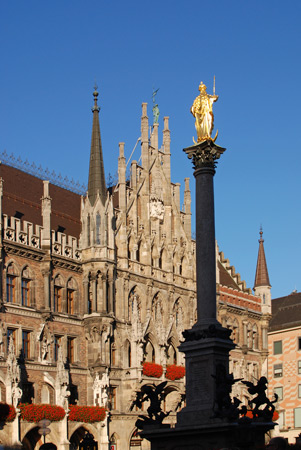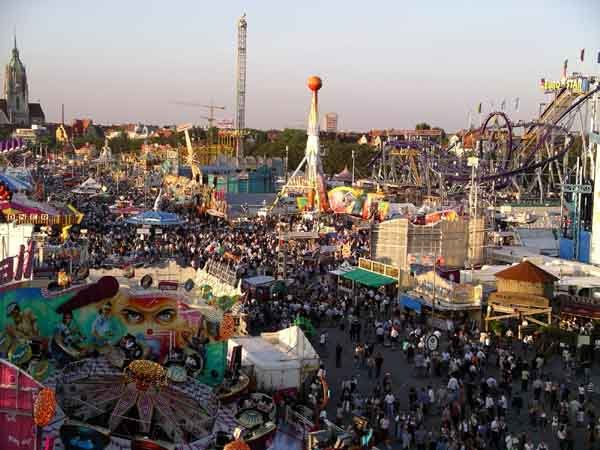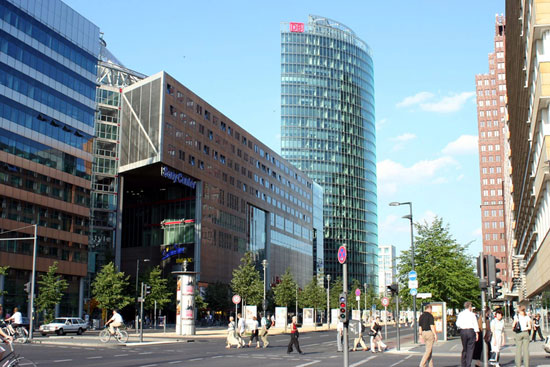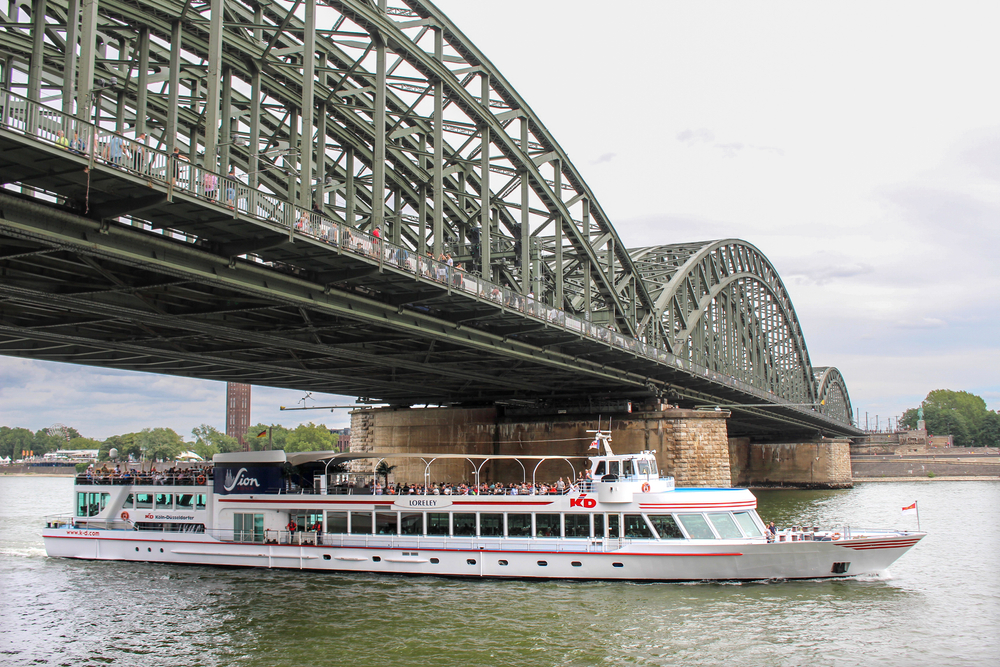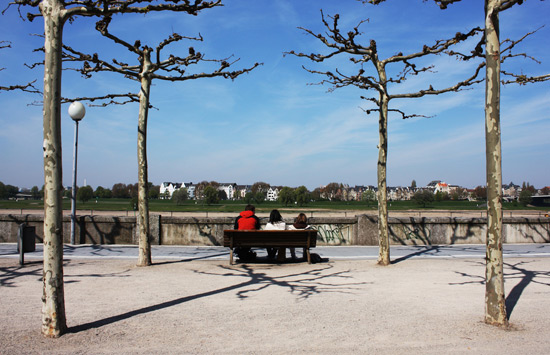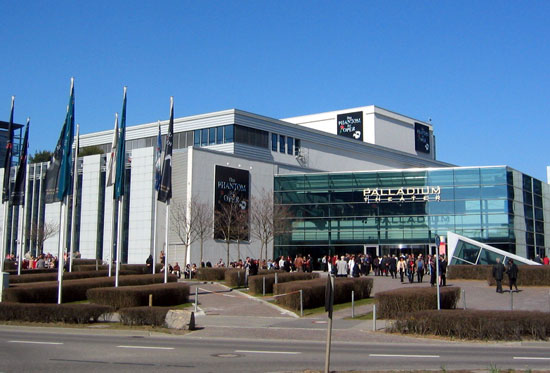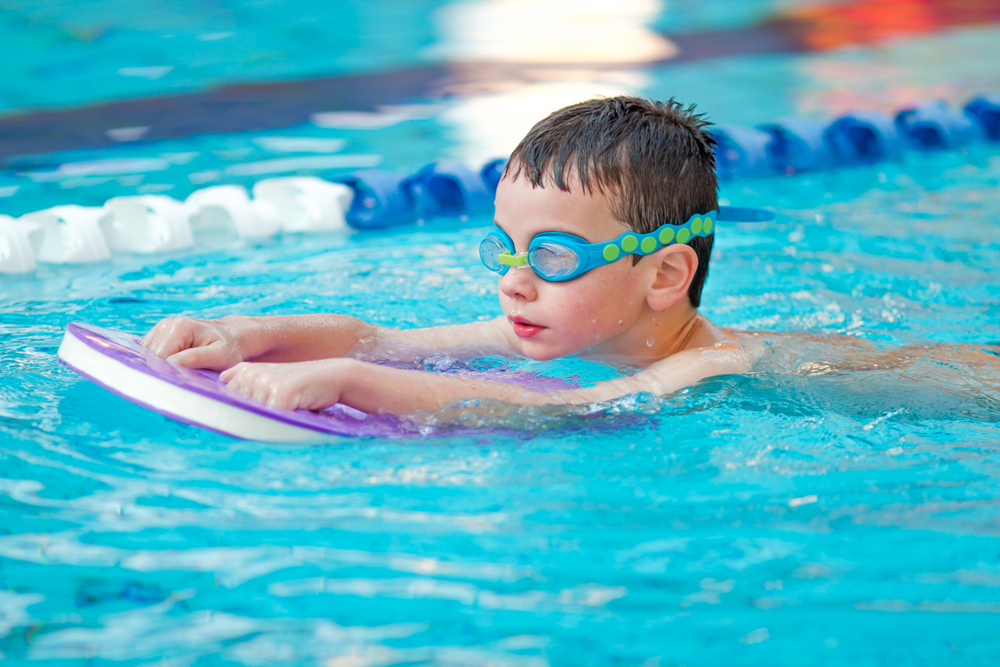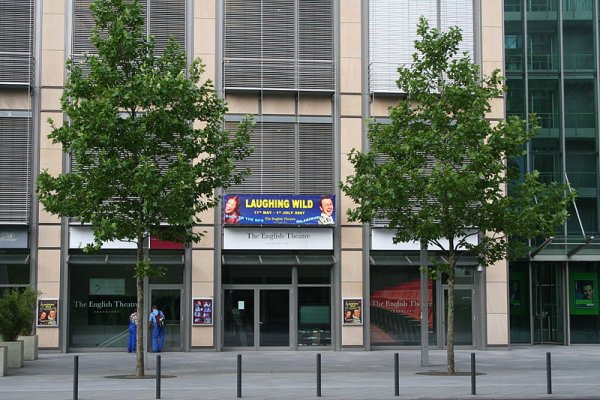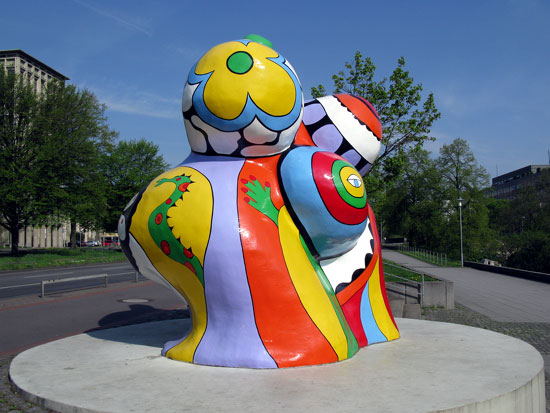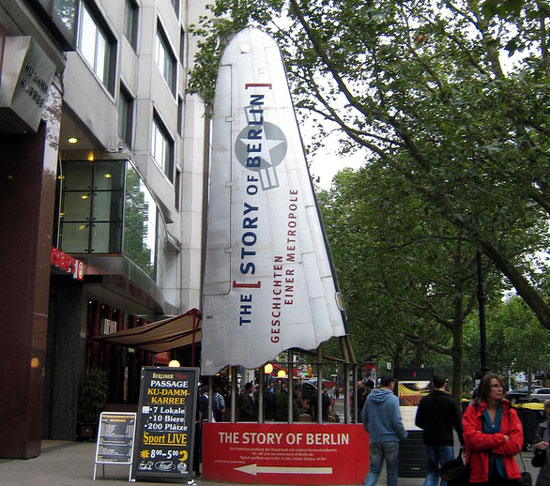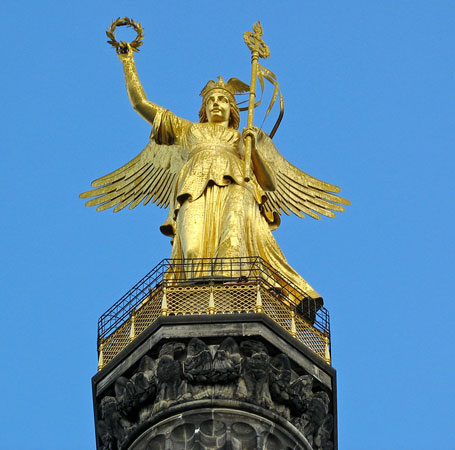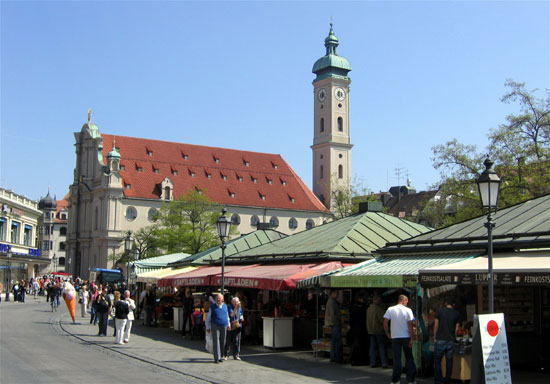Points of Interest
Alexanderplatz
Berlin 10178, Germany
Alexanderplatz is one of Berlin's most famous squares and Mitte's main transport hub. Named after an 1805 visit by Russian Czar Alexander I, the large market square has been in existence since the Middle Ages, when it was known simply as "Ochsenmarkt" (Ox Market). Following the reunification of East and West Berlin, Alexanderplatz underwent numerous changes in the name of westernization, and yet the mix of socialist and western architecture on view here still makes it one of the most fascinating parts of Berlin. Today Alexanderplatz continues to develop in a literal sense and a figurative one too, poised as it is to become the lively center of Berlin yet again. Go here to see the World Clock, Fountain of International Friendship, TV Tower, and many more of the city's top monuments.
Allianz Arena
Werner-Heisenberg-Allee 25
Munich, Germany
Allianz Arena can hold almost 70,000 people and cost €340 million to build. Since 2006, it has been home to the world-famous FC Bayern München Fußball (soccer) team, the most successful team in Germany and holder of 22 German titles and 15 cups. Germans, and Bavarians in particular, are crazy about soccer. Seeing a professional live game is an experience like no other. Be ready for a raucous time! Wear plenty of red and white, go thirsty (every soccer match is accompanied by good Bavarian beer), and warm up your vocal chords, because German fans are constantly singing.
Alpenpark Neuss
Ander Skihalle 1
Neuss, Germany
In the first indoor ski region in Germany you will find everything a ski area needs: gentle slopes with 10 to 18 percent incline for children and beginners as well as a steep upper slope. The 100-meter (328-foot) long, separate beginner's slope is the ideal practice area for anyone who has never been on skis or snowboards. Our four-seater chairlift brings you to the "mountain station" of the 300-m (984-ft) long main slope at an altitude of 110 m (360 ft). Alpenpark Neuss is located a close 20 minutes from Dusseldorf, so pack your skis and snowboards and plan for a full active day. Includes eateries that make it easy to spend a full day hitting the slopes.
Altona Fish Market
Altonaer Fischmarkt Große Elbstraße 1
Hamburg 22767, Germany
Though it may be billed as a fish market, it would seem that everything is up for sale at this open air market, which runs from the wee hours around dawn until mid-morning every Sunday. The fervent bargaining over everything from fourth-hand rubbish to live animals to food to furnishings is a spectator sport in itself, but the brave may wish to dive in and enjoy the scintillating sales floor deal-making themselves. The fish market, a quintessential Hamburg tradition, began in 1703 when the local fisherman wanted a means to sell their fish before church on Sunday morning. Hamburgers have been gathering here ever since, not only to haggle over herring, but also to enjoy the other wares and amusements on display.
Augustinian Brewery
Landsbergerstraße 31–35
Munich, Germany
This is Munich's oldest brewery, whose beer was brewed as early as 1328. The brewery was originally part of the Augustinian monastery, but it was secularized by Napoleon in 1803. It has seen many location changes, finally arriving at Landsbergerstraße in 1885. The beer is now one of the most popular in the city (and, indeed, in the country) and is sold widely in supermarkets and bars. However, a visit to the historic Landsbergerstraße site is not only a lesson in Bavarian history, but also a lot of fun. The restaurant has high ceilings and traditional old wooden benches (communal seating, of course). In fair weather, enjoy the large beer garden.
Central Train Station of Hamburg
Hauptbahnhof Hachmannplatz 16
Hamburg, Germany
The Hauptbaunhof is the main train station in Hamburg and is located on the east side of the Altstadt and the Alster lakes. This bustling station, which serves as the starting point for many explorations around the city, is the busiest in Hamburg and just short of Paris's Gare Du Nord in the sheer number of passengers that travel through it each day. Originally constructed in 1906 to replace four terminal stations, the building is another of Hamburg's many architectural treasures, a terrific cast-iron-and-glass structure boasting a 140-meter (460-ft) roof supported only by pillars at each end and a colossal central clock tower.
City Hall of Düsseldorf
Rathaus Marktplatz 1 Altstadt
Düsseldorf, Germany
As in most German cities, Düsseldorf's Rathaus (Town Hall) fronts a plaza that often hosts the yearly Christkindlmarkt and other seasonal events. Düsseldorf's Rathaus consists of three attached buildings from different periods: the so-called "old town hall" at the northern side of Marktplatz, the Wilhelminischer Bau, and the Grupello Haus at the western side. Restaurants line the plaza, and a fountain in its center offers a great photo opportunity.
Dammtor Train Station
Dammtorbahnhof Ernst-Siemers-Allee
Hamburg, Germany
One of Hamburg's finest train stations, the Dammtorbahnhof is a turn of-the-century art nouveau edifice composed of steel, sandstone bricks, and glass. The station is one of many art nouveau architectural works one can find scattered throughout Hamburg. This graceful structure, opened in July 1903, took its name from the old city gates that existed at this location until the late 1800s. Running on the Hamburg-Altona line, this station's trains provide local, regional, and long-distance service. To make connections easier, a bus station shares the location. If you visit this attraction early on, note that it's an excellent place to pick up a city map before venturing out to other city sights.
Ebbelwei Express
Applewine Express Kurt-Schumacher-Straße
Stadtwerke Verkehrsgesellschaft, Frankfurt
An offbeat and enjoyable way to see some of Frankfurt's sights is by purchasing a ticket for the Ebbelwei Express. The trip on the distinctive, multi-colored tram takes about one hour and comes with complimentary pretzels and a bottle of apple wine to wash them down. The tram makes a loop that twice crosses the river Main and stops at a number of attractions, including Römer (city hall), the zoo, Hauptbahnhof (central station), and Festhalle, which is part of the Frankfurt Fair & Exhibition center. Passengers can jump on and off whenever they like at each stop on the itinerary. The tram operates on the weekends and public holidays with 10 trips a day, although service is cut back somewhat between November 1 and March 31.
Field Marshal's Hall
Feldherrnhalle Munich, Germany
Today Feldherrnhalle is the centerpiece of one of Munich's most beautiful squares. Bordered by the Hofgarten and Theatinerkirche (Theatine Church St. Kajetan), it's simply stunning. Live, open-air, classical music concerts take place here during the summer, but buy tickets early as they sell out quickly.
Freizeitbad Dusselstrand
Dusselstrand Leisure Pool Kettwiger Strase 50
40233 Dusseldorf, Germany
All ages will enjoy this indoor-outdoor water park in Dusseldorf. There are various pools for big and small splashers, so you can swim a few lanes or take kids to play among bubblers, a waterfall, and geyser. Sporty swimmers also have the option to shoot hoops or zoom down the snake slide. There’s a toddler pool for the littlest kids as well. Adults can relax in the sauna or steam room and a bistro offers snacks and other food. Weekends can get busy though conditions are less so during the week.
Hindenburgschleuse Anderten
An der Schleuse
30559 Hannover, Germany
If you’re looking for a relaxed, scenic area to get away from the busy city hustle, plan a visit to Hindenburgschleuse Anderten. The area is surrounded by historic monuments and includes several canals. Pack some snacks and a ball to toss and bring the kids to enjoy the sights, roam the area, and watch the boats that travel the canals.
Hofbräuhaus
Marienplatz Platzl 9
Munich, Germany
The popular Hofbräuhaus was founded in 1592 by the Duke of Bavaria, who was unhappy with the beer brewed in Munich at the time. It was distinguished from other breweries in the region by its brown ale. The beer was originally brewed in the historic beer hall on the first floor, which today seats up to 1,300 guests. Be sure to check out the beer stein safes. Here, past and current regulars store their favorite (often valuable) stoneware and glass mugs. Of course, there also is a beer garden in the back, with room for up to 400 guests.
Hop On Hop Off Bus Tour
Kurfürstendamm 235
Berlin, Germany
Settle in to see the sights of Berlin aboard a bus tour that offers to flexibility to jump on or off as you please. There are red and blue routes, with a total of 20 attractions seen from the double decker, open-topped buses. See historic Brandenburg Gate and Checkpoint Charlie, Berlin Zoo, Alexanderplatz, Museum Island, and the Victory Column, among many other key city attractions. An audio guide is offered in eight languages, delivering the history of the city from the comfort of your cushy seat. Tickets are available for one or two days, with classic, premium, deluxe, and evening tour options.
Marienplatz
Marienplatz 8
80331 Munich, Germany
The Marienplatz has been Munich’s central square since 1158, a spot to gather, socialize, and sell goods. There are many attractions to see at Marienplatz, but its defining feature is City Hall (Neues Rathaus), which was completed in 1908. Plan to visit at 11 a.m., noon, or 5 p.m. to watch the figures in the tower's carillon (Glockenspiel) perform the Schäfflertanz, a dance commemorating the end of the plague in 1517. Kids should find this charming, animated attraction fun and interesting. Follow the cobblestoned streets to some of the city’s best shopping, sidewalk cafés, and historical sites. There is a toy museum in Old City Hall, which will give kids a peek at when toys didn’t have batteries, high-tech features, or internet capabilities. Near the Marienplatz is the “world’s most famous tavern” the Hofbrauhaus, offering beer for the adults and plenty of tasty treats for kids, as children are welcome in Germany’s beer gardens.
Miniatur Wunderland
Kehrwieder 2-4, Block D
Hamburg, Germany
There are many engaging sights and activities happening at Miniatur Wunderland that families should plan to visit while in Hamburg. Miniatur Wunderland holds a Guinness World Record for having the longest miniature railway, populated with over 1,000 trains. There’s also an airport with 47 planes that take off and land, ships floating in water, and an erupting volcano. See over 260,000 figurines and replicas of many famous Hamburg buildings and other city venues. There are 200 push buttons that allow interaction from visitors, who can make scenes come alive. Children should love making a gold-wrapped treat emerge from a miniature chocolate factory, for example. There are so many captivating and realistic scenes that you should plan to stay several hours. Trust us, this is one spot you don’t want to miss.
NeonGolf Hannover
Heiligerstraße 15-16
30159 Hannover, Germany
You can play black light mini golf on 500 square meters (5,382 square feet), at NeonGolf. In three themed rooms you immerse yourself in a completely new world that is brought to life with 3D chromadepth glasses. First you travel under water, then further into the jungle and finally space shines in bright colors and shapes. You can prove your skills on a total of 18 well-known miniature golf courses and exciting new courses. Whether a family outing, a start into the evening, or a company event, NeonGolf Hannover offers leisure sports and a lounge atmosphere, regardless of the weather, on a total of over 1,000 sq m (10,764 sq ft) in the city center.
– Information provided by NeonGolf Hannover
New City Hall of Munich
Neues Rathaus Marienplatz 8
Munich, Germany
There are many attractions to see at Marienplatz, but its defining feature is the Neues Rathaus, which was completed in 1908. Plan to visit at 11 a.m., noon, or 5 p.m. to catch the figures in the tower's Glockenspiel (carillon) perform the Schäfflertanz, a dance still performed in Munich every seventh year to commemorate the ending of the plague in 1517. The building houses the city's government and mayoral offices, although the restaurant Ratskeller occupies a good deal of the first floor and is popular among tourists. At 10 a.m. and 1 p.m., free three-hour walking tours of Munich in English leave from Mariensäule (Mary's Column).
Oktoberfest
Theriesenwiese
Munich, Germany
For many, Oktoberfest is the reason to visit Munich. It has become a defining feature of Bavarian culture. The festival originally commemorated the marriage of Prince Ludwig to Princess Theriese (whose name is now assigned to the location of the festival) in 1810. It traditionally took place during the 16 days leading up to and including the first Sunday in October. However, after the reunification of Germany, it was pushed back in case the first Sunday happened to be October 3, now German Unity Day. The festival draws more than six million visitors each year. The trick is to get there early (lines form outside the tents in the wee hours of the morning); if you're daring, come wearing Tracht (traditional costume). Also come with an enormous appetite and plenty of cash.
Olympic Stadium
Olympiastadion Olympischer Platz 3
Berlin 14053, Germany
Located at the western edge of Charlottenburg, Olympiastadion (Olympic Stadium) was erected for the historic 1936 Olympic Games in which Jesse Owens, an African-American, triumphed over Nazi racial theories by taking home four gold medals. The stadium underwent a major overhaul in 2004, reopening in 2006 just in time to host the World Cup. On non-event days, it is open for tours. The recently reconstructed 77-meter (250-ft) bell tower is an excellent vantage point for expansive views over Berlin. A modern glass elevator whisks visitors to the observation deck, past images relating to the history of the stadium. An exhibit devoted to the 1936 Olympic Games, in the tower's Langermarckhall, is also a must for visitors.
Potsdamer Platz
Berlin, Germany
Following the debut of the Potsdamer Platz train station in 1838, one of Europe's busiest squares came to life with grand hotels and luxury establishments lining its streets. By the 1920s, scores of tramlines and suburban railways (U-Bahn and S-Bahn), bus routes, car traffic, and travelers converged daily on the square, necessitating the installation of a traffic light-Europe's first. The ravages of World War II and later the tragic division of Berlin, which cut straight through Potsdamer Platz, laid waste this magnificent square. Post-reunification, it has become one of Berlin's star attractions, once again a glittering centerpoint brimming with casinos, posh hotels, and upscale eateries. Cultural offerings abound. The Panoramapunkt (Panorama Point) at Potsdamer Platz 1 offers a bird's-eye view of this legendary square and the whole of Berlin.
Red Town Hall
Rotes Rathaus Rathausstraße 15
Berlin 10178, Germany
Rotes Rathaus, literally translated as "Red Town Hall," is the seat of Berlin's Senate, its presiding city-government body, and the mayoral offices. Constructed between 1861 and 1869 by architect Hermann Friedrich Wäsemann, the hulking building with four main wings and generous inner courtyards is instantly recognizable by its red clinker brick façade. A number of unique architectural features make the building worth a look, including four complete stories linked by tall window frames, an overhanging balustrade, and the 74-meter-tall (240-foot-tall) tower rising from its main portal, one of the structure's defining characteristics. Visitors should also take note of the terracotta frieze along the façade, illustrating the history of Berlin until 1871 in a series of 36 panels.
Rhine Boat Tour
Left bank of the Rhine at Hohenzollern Bridge
Cologne, Germany
Take a leisurely cruise along the Rhine River and get an often unseen view of many Cologne’s highlights. Among these are the cathedral, Old Town, chocolate museum, and German Sports and Olympics Museum. Pass under several bridges and view green rolling meadows. Tours are long enough for kids to stay engaged while the adults can relax and let them wander the deck in safety. Several companies—such as Colonia and KölnTourist—offer tours in varying lengths during the summer.
Rhine Promenade
Rheinuferpromenade Near Stadtmitte along the Rhine
Düsseldorf, Germany
The promenade along the river in the middle of the city was made possible by the ambitious construction of a tunnel that ferried traffic from the B1 below the promenade, allowing visitors and locals to stroll right along the Rhine in peace and quiet. This "return to the river" was a long-held dream of Düsseldorfers and has enlivened the city center, bringing business, culture, and people back to the inner city. Be sure to appreciate this monumental effort by the citizens of Düsseldorf when you go.
Schiller Square
Schillerplatz Stuttgart, Germany
The noble statue of Stuttgart literary luminary Friedrich Schiller—the first memorial devoted to the author to be erected in the country—is the showpiece of this well-preserved square, which started life 1,000 years ago as a training ground for horses. A 360-degree spin round Schillerplatz will reveal the history of Stuttgart in a nutshell: the ancient Stuthaus (Mare House), the Stiftskirche (Collegiate Church), and the Prinzenbau (now the modern Ministry of Justice) are all in plain view. An elegant archway to the east takes you past the Old Chancellory and conveniently to the Altes Schloss (Old Castle). Every two weeks a vibrant street market takes place here. If you come to visit by car, there is a convenient underground car park situated beneath Schillerplatz.
SI Centrum
Plieninger Strasse 100
Stuttgart, Germany
The entertainment hub to end all entertainment hubs, SI Centrum is a pulsating, gleaming complex of saunas, casinos, and movie theaters. It was founded in 1994 to bring something of Las Vegas to Stuttgart, and it doesn't disappoint. You can take a dip in the SchwabenQuellen, 6,000 square meters of saunas and steam rooms designed according to different themes (Mayan, glacier, grotto, etc). The Spielbank hosts blackjack, roulette, and baccarat tables, as well as 250 gaming machines. Movie buffs are bound to find something of interest being shown at the CinemaxX. Two large concert venues, a four-star hotel, and a plethora of upscale bistros complete the experience.
Swimming Pools at Festland and Holthusenbad
Festland Holthusenbad
Holstenstraße 30
Hamburg, Germany
Goernestraße 21
Hamburg, Germany
Let the kids splash and swim while you relax and enjoy watching them enjoy unstructured and refreshing playtime. Festland includes both indoor and outdoor pools and kids have a spacious 900 square meter (9,687 square foot) Dinoland area with giant dinosaur figures to keep them company. There are large and small slides and an area just for babies too. Adults can enjoy massages, the sauna, or take an aqua fitness class. Holthusenbad swim facility offers indoor and outdoor pools and kids have their own large water play area. There’s also a wave pool and thermal pool to enjoy.
The English Theatre
Gallusanlage 7
Frankfurt, Germany
The English Theatre was established in 1979, and today it is the largest English-speaking theater company in all of Continental Europe. Such success can be attributed to a winning formula that combines a varied selection of plays with a production process that uses actors from English-speaking countries. The ever-changing repertory comes from classic dramas and contemporary plays, comedies and satires, and crime thrillers and musicals. The performers are chosen and rehearse in Britain before coming to Frankfurt for final rehearsals. The theater's unique location is on the ground floor of Dresdner Bank's high-rise building, and with 300 seats and excellent acoustics it provides a distinctive experience in Frankfurt for all theater lovers.
The Nanas
Die Nanas Leibnizufer
Hannover, Germany
When these three brightly colored sculptures were installed in 1974 on the banks of the Leine, Hannoverians hated them. Crafted by Franco-American artist Niki de Saint Phall, they seemed oversized, overdone, and overly sexual. Nearly four decades later, Die Nanas are one of Hannover's cultural leitmotifs. When Saint Phalle died in 2002, she was deeply mourned in a place that had granted her the freedom of the city. Saint Phalle was an artist who began her career as a fashion model for the likes of Vogue magazine, as famous for her precocious sexuality as her cover images. With time, she developed her own style as an artist, and her own feminist philosophy too. The three sculptures of Die Nanas (named Sophie, Charlotte, and Caroline) are curvaceous and womanly, almost pregnant with primal color and energy. Surrounded by flea market stalls every Saturday, they're one of Hannover's most famous sights.
The Story of Berlin
Kurfürstendamm 207–208
Berlin 10719, Germany
This interactive journey through Berlin's 800-plus years of history explores the city's development from its 13th-century inception to modern times. Twenty-three themed rooms are equipped with state-of-the-art animation technology and walk-through sets that effectively recreate the atmosphere of various eras in Berlin history including Prussia, the Third Reich, industrialization, and the Wall. Light and sound effects add to the authenticity of the experience. The guided tour includes a walk through an original nuclear bomb shelter beneath the bustling Kurfürstendamm shopping street. Additional highlights: a peek into two reconstructed Berlin Wall-era living rooms from the East and West sectors of the city, a vibrating factory floor, and a conceptual, disconcerting Third-Reich exhibit.
Victory Column
Siegessäule Großer Stern 1
Berlin, Germany
This Tiergarten icon, rising up 70 meters (225 feet) from a red-granite base in the midst of a traffic circle near the Brandenburger Tor (Brandenburg Gate), is one of the most recognizable Berlin monuments. Built in 1864 to commemorate the Prussian victory in the Danish-Prussian War, it was further ornamented in honor of later triumphs with the addition of the magnificent gilded figure at the top, an 8-meter (26-ft), 35-ton Goddess of Victory. The base is adorned with bas-reliefs of battles, and further up the column a mosaic frieze by Anton von Werner portrays the founding of the German Empire in 1871. An observatory at the top of the Siegessäule affords terrific views of the city.
Victuals Market
Viktualienmarkt Marienplatz
Munich, Germany
When the city’s central square, Marienplatz, became too small for the cereal and agricultural market that took place there until the early 1800s, the market was given its own location. Today, in addition to the original farmers’ market, Viktualienmarkt sells gourmet items and traditional Bavarian specialties. There are flower shops, bakeries, restaurants, and, of course, a beer garden where children are welcome. Locals come here to find exclusive food products not sold elsewhere in the city, and tourists come to find a wide array of Bavarian delicacies all in one spot. Its proximity to Marienplatz makes it an ideal place to grab breakfast before embarking on a day of sightseeing or a great rest stop between attractions. It's not uncommon to see Bavarians here in traditional dress, enjoying a Weissbier (wheat beer) or shopping with their big wicker baskets.
Copyright © 1993—2025 World Trade Press. All rights reserved.

 Germany
Germany 
